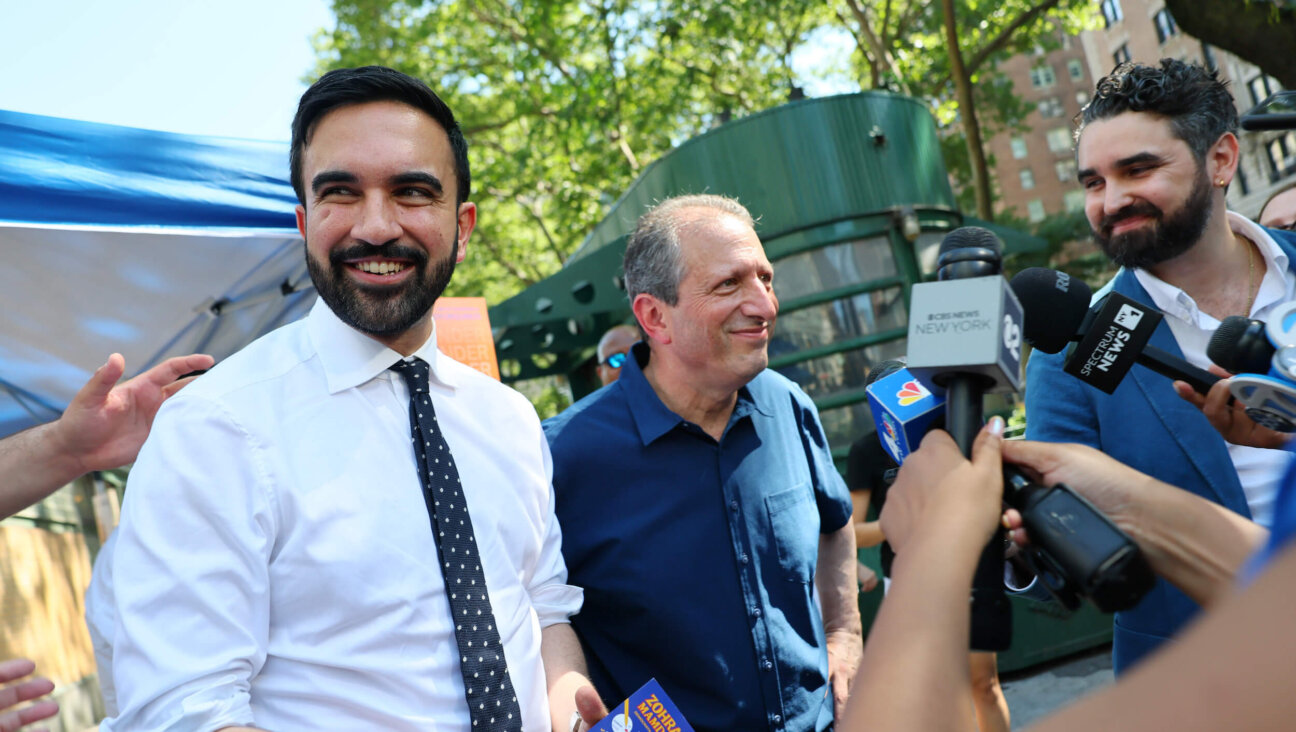We Still Don’t Know How To Teach the Holocaust

Graphic by Angelie Zaslavsky
A Jewish boy wears a yellow star like those forced on Jews during the Holocaust / Getty Images
“So, children, tell me how you came to Theresienstadt.”
Thus began my seventh grade intro to Shoah education. Not that we hadn’t been learning about the Holocaust for most of our day school careers. There was the yearly replica of Yad Vashem, where each grade was responsible for a booth, countless Holocaust-themed books and reports, and the rite of passage that we liked to call, “create a board game based on the book Night by Elie Wiesel.”
All this was by way of introduction to a week-long role play where the teacher had us pretend to be children in the famous Czech camp. The chain link fence around the tennis court was a visual approximation of barbed wire. Those years of investigation into all things Nazi had given us ample material for creating our “in the camps” personas. Every one of us had spent hours pondering how we would have fared had we been in Germany during Kristallnacht, or Warsaw in the ghetto. Or Auschwitz. We had imagined how we would react if our fathers disappeared. We wondered if we would have been brave enough to fight with the partisans. If our instinct for self-preservation would have allowed us to look out for ourselves at the expense of others.
Our fantasies had a color – black and white like the newsreels we saw, little bits of brown from flashes of the mini-series Holocaust, which aired when we were six or seven, and still our parents let us watch. And so it was that when the teacher announced we would be pretending to be in Terezin for the next few days, it was startlingly easy to make the shift. Even the classroom and our colorful early eighties outfits seemed to fade to a dull gray. Our ever-present nightmares were becoming reality, and it was almost a relief, at last, to know it was finally happening.
Looking back, of course, this all seems absurd. But our childhoods had been marinated in the vinegar of fear, deep sadness and anger. I don’t remember a time when I didn’t know about the Shoah. When it didn’t hang over me like a cloud just about to burst. As a three year old, when my Aunt and Uncle had a robbery at their store, and everyone was visibly upset, I tried to console them the best way I knew how. “Come on,” I said, “it’s not as bad as the Holocaust.”
Over the years, I have developed my own observance of Yom HaShoah, which consists largely of somber prayer and obsessive watching of the Holocaust-themed programming that is the hallmark of Israeli television for those 24 hours. But I am aware of how little my own children hear about the events of the middle of the last century. In school they get the barest outlines of the story, and a request to behave extra-respectfully. The older ones may even hear from one of the few survivors still around and able to tell their stories. Too much graphic description, though, and parents would be complaining about the school scaring and traumatizing their children.
Even in Israel, the stories have been sanitized for kids. In order for my own to be allowed to visit Yad Vashem in Jerusalem (once they had reached the approved age of ten) they were grilled by guards about their dates of birth, because we had neglected to bring ID proving they were old enough to enter. The grilling may have been more traumatic than the exhibits locked inside.
And yet, when Tisha B’Av rolls around, we read the stories of blood flowing in the streets, of babies’ heads being smashed against the rocks. Because it is part of our traditional liturgy, our cannon, the book of Eicha is required reading for even relatively young children. And they are not scarred by the experience. On Passover, we smile broadly as our little ones recount the stories of baby boys being thrown to their deaths in the river, and of divine retribution on the sons of our oppressors. And then our charges run, giggling, to find the Afikomen. They are none the worse for wear.
Very few would argue that the Shoah education I received was a model for how we want it done today. When my seventh grade teacher went around the room with her question, the transformation was nearly complete. One by one the students recalled being torn from their homes in the middle of the night. They recounted stories of what they had taken with them in the couple of minutes they were given to pack. They described their siblings being beaten, their parents shot in front of them. They weren’t remembering the Shoah, they were becoming it.
It was all too much, no doubt. But the answer is not to hide our heads in the sand and assume that our children will learn on their own. My six-year-old loves to tell stories, and especially those of the holidays or the weekly Torah portion. Last year, when he heard it being discussed at the dinner table, he said, “Ima, what’s the story of Yom HaShoah?”
“Well,” I began, “There were some very bad people called Nazis, and they hated the Jews. They wanted to kill all of them.”
“Like Haman?” he asked.
“A little. Only they weren’t stopped right away, and they killed many, many Jews. Many of our family. It was a sad time.”
“But then we got them?”
“Yes, after a lot of horrible killing, we did defeat the Nazis.”
“So it’s a happy holiday? Like Purim?”
Maybe in a thousand years. Maybe never. For now, it remains too close. Too raw. We are still wounded, and the retelling is like peroxide making us wince. It’s the pain that lets us know it’s working. Our babies are not so fragile. A few times a year, they can hear the stories, see the pictures. We remain by their sides. With a Band Aid and a kiss and a promise that we will keep them safe. The same promise we made in Shushan. And in Jerusalem. And in Poland.
Now go play.






















